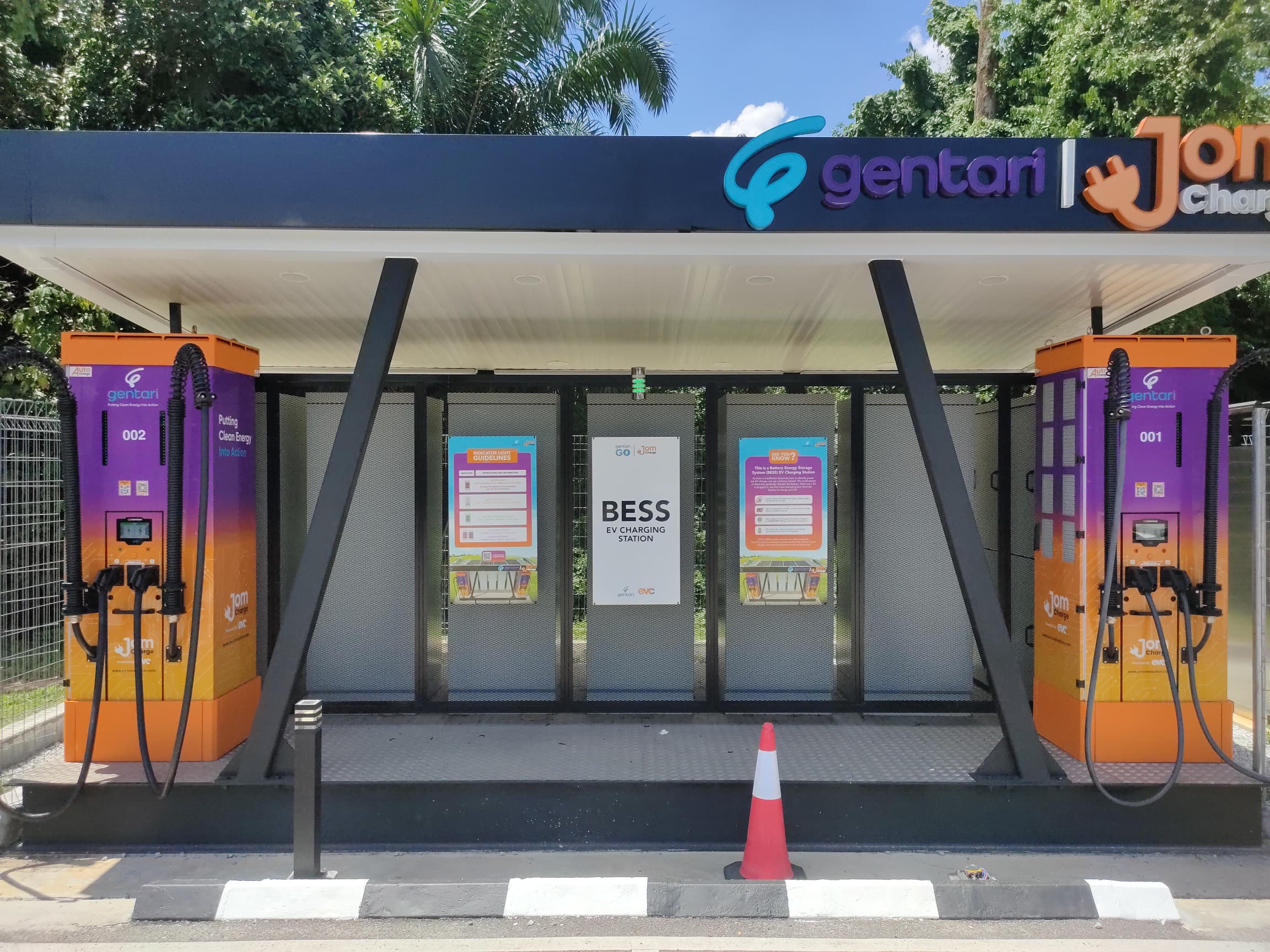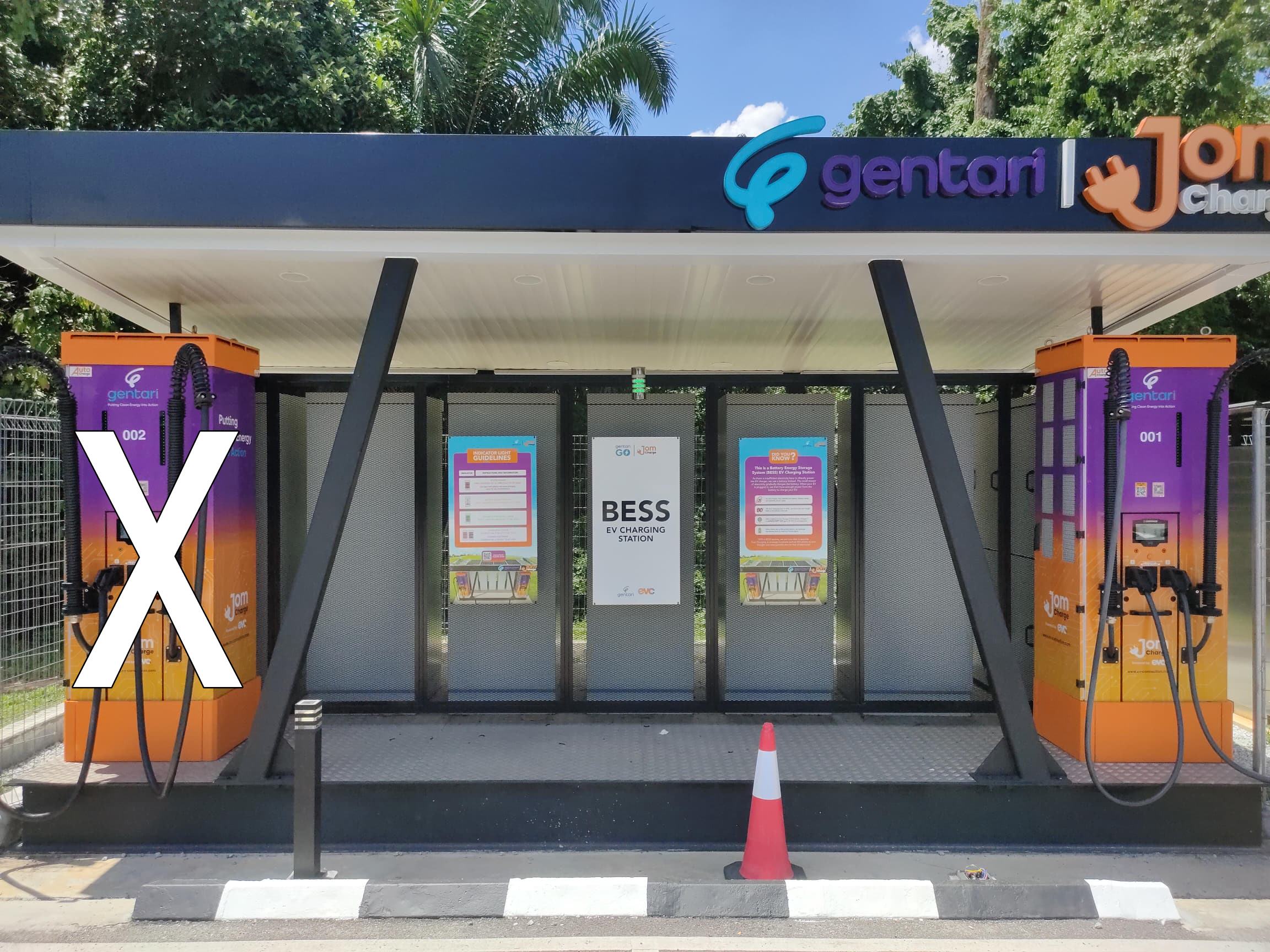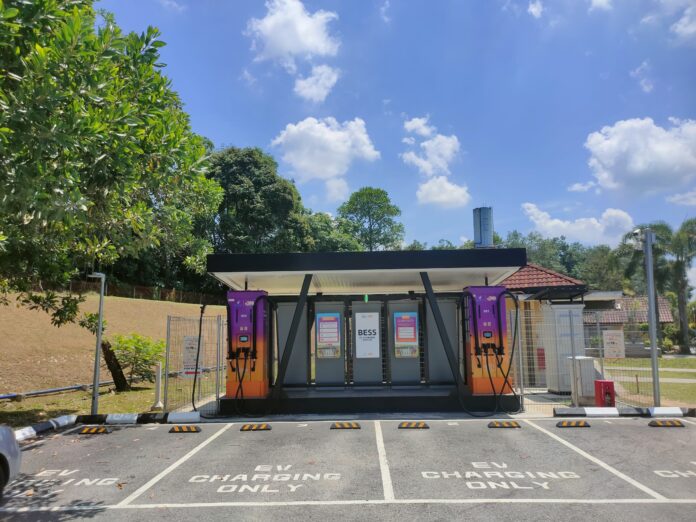Over the past 10 years, the technologies relating to electric vehicles have been continuously advancing and this includes charging stations which have become more powerful to recharge at higher speeds, making waiting time shorter.
To improve the EV charging experience, EV Connection (EVC), the operator of the JomCharge network, and Gentari, have introduced multiple innovative tech upgrades to their battery energy storage system (BESS) powered EV charging stations.
BESS addresses the issue in many areas across Malaysia where there should be charging stations but lack the necessary electricity supply to power a charging station. Though along highways, these are areas where the electricity supply is only sufficient to power small-scale usage such as restaurants or kitchens and general lighting.

With BESS, the small electricity supply is used to trickle charge the on-site battery until it is full. This battery can then be used to recharge EVs. In this way, it is possible to have fast-charging stations in areas where fast-charging points could not be set up before.
The main issue is, of course, the size or storage capacity of the battery which is not an infinite one. For example, the batteries deployed at the Behrang Southbound Layby have a 300 kWh capacity – which implies that if 6 EVs with an average battery size of 50 kWh charge back-to-back, this will then deplete the battery completely. The charging point would therefore be unusable until it is fully charged again.
This was not a problem just a couple of years ago when EVs were just starting to be sold in Malaysia. However, in the past 6 months, the number of EVs in the country has increased greatly, creating greater demand for charging stations. The issue of charging stations is amplified, especially during festive seasons or long weekends when Malaysians travel long distances.
With that in mind, the R&D team at EVC have collaborated with their counterparts from Gentari to introduce a few innovative tech upgrades that will mitigate the above issues. First, on the JomCharge app, there now is a battery level icon which allows users to track the battery levels at these BESS-powered charging stations. In this way, the driver will be more aware of the situation and can better plan the journey.
Second, the maximum State of Charge for EVs at these stations will now be capped at 80%. Instead of allowing every car to charge to 100%, users can now only charge to 80% and with this limit, more EV owners can use the charging station before all the energy is used up.
The third feature introduced is what EVC considers a game-changer for BESS EV charging stations. When the battery levels deplete (even completely) and there are vehicles that require charging, the R&D team at EVC have developed a method to automatically stop the battery from recharging but instead channel all residual energy in the battery, grid energy and also energy generated by the solar panels – into one single charger.

Therefore, even when the battery is at low levels or is depleted, when an EV arrives to charge, it will still be possible to do so at a single charger. However, the charging rate will be lower (up to 50 kW). Once the vehicle has left, the battery itself will be recharging.
These additional features tot BESS-powered charging stations were introduced introduced last month at the Behrang Southbound Lay-by & Northbound Lay-by EV Charging Stations. Following a beta phase for testing, all other BESS EV Charging locations will have the features and motorists will be informed of their availability by signs at the locations.

